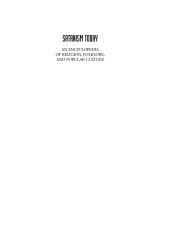I. VAMA MARGA Foundations Of The Left-Hand Path - staticfly.net
I. VAMA MARGA Foundations Of The Left-Hand Path - staticfly.net
I. VAMA MARGA Foundations Of The Left-Hand Path - staticfly.net
You also want an ePaper? Increase the reach of your titles
YUMPU automatically turns print PDFs into web optimized ePapers that Google loves.
some aspects of Tantra. His highly recommended works on Tantricism,<br />
which are at their best when describing the way of the left-hand path, are<br />
authoritative enough to have been published in India, something which rarely<br />
occurs with Western authors. It is difficult to say whether Evola was merely a<br />
brilliant esoteric theoretician and scholar or an actual practicing magus. Like<br />
Bataille, a key to Evola's thought is the attainment of a heroic sovereignty,<br />
the recreation of one's self as a "Kingly man," in the language of Naglowska's<br />
doctrine of the Third Term. Ultimately, Evola's austere hermetic approach to<br />
initiation is worlds apart from the somewhat romantic Luciferian sexuality of<br />
Naglowska, but the brief romance of these Western adepts of the sinister<br />
current is a fascinating footnote in the modern development of the left-hand<br />
path.<br />
One of the writers who came into Maria de Naglowska's orbit was the<br />
American journalist, author and erotic explorer William Seabrook. <strong>Of</strong> lesser<br />
intellectual stature than Evola and Bataille, Seabrook's specialty was the<br />
writing of rather sensational exposés of occult subjects. His better known<br />
books include <strong>The</strong> Magic Island, a pioneering study of Haitian Voodoo and<br />
the cult of the zombie, a subject which Naglowska has also studied, and<br />
Witchcraft: Its Power In <strong>The</strong> World Today, which provided pre-World War II<br />
Americans with some of the only knowledge of contemporary magical<br />
practice available. <strong>The</strong> prolific pornographic author Frank Harris introduced<br />
Seabrook to Aleister Crowley, who engaged Seabrook's wife as one of his<br />
sex-magical partners – with her husband's blessings. Seabrook shared with<br />
Crowley an absorbing interest in the use of bondage and sexual slavery as a<br />
magical technique. According to one of Crowley's final interviews, Seabrook<br />
"always traveled with a case-load of chains, being a masochist as well as a<br />
sadist."<br />
Upon seeking out the celebrated Naglowska's Satanic temple as a<br />
potentially juicy subject for one of his journalistic pieces, Seabrook<br />
discovered that some of his best liked fetishes – sexual suspension and erotic<br />
autoasphyxia – had been incorporated into the Sophiale's religious<br />
celebration of the Mystery of Hanging. Overall, however, one gets the<br />
impression that Seabrook was something of a dilettante, who ingratiated<br />
himself into magical circles in search of colorful copy, and whatever erotic<br />
diversion he might find along the way. Crowley acknowledged that<br />
Seabrook possessed "genius" but ultimately dismissed him as having "a<br />
236<br />
journalist's mind."<br />
Fraternitas Saturni – Satana And Her Gnosis<br />
Naglowska's Fraternity of the Golden Arrow was not the only European<br />
Order in the 1920s and 1930s to fuse a form of sinister current sex magic<br />
and an idiosyncratic vision of Lucifer and Satan in its doctrine. Before we<br />
look into the impact of the far more well-known German sex magical school<br />
known as the O.T.O., a contemplation of its obscure semi-associate,<br />
Fraternitas Saturni, or Brotherhood of Saturn, will provide us with an<br />
intriguing example of how some of the sexual initiatory teachings of the<br />
Pastern Vama Marga were adapted by Western magicians. In the case of the<br />
Fraternitas Saturni, we have a uniquely Teutonic initiatory school thats<br />
influence has never successfully been transplanted into Anglo-American<br />
culture.<br />
Since the ni<strong>net</strong>eenth century, there had been a thoroughgoing<br />
fascination with all things Indian prevalent among the German intelligentsia.<br />
German and Austrian Indologists looked to India as the forgotten source of<br />
Teutonic civilization. For post-Nietzschean German intellectuals seeking to<br />
break with the Judaeo-Christian heritage they interpreted as an alien doctrine<br />
imposed by force upon Europe, the recently rediscovered Aryan mythology<br />
of India was enthusiastically embraced as the West's true spiritual<br />
fountainhead. This thread became a powerful impetus for German
















